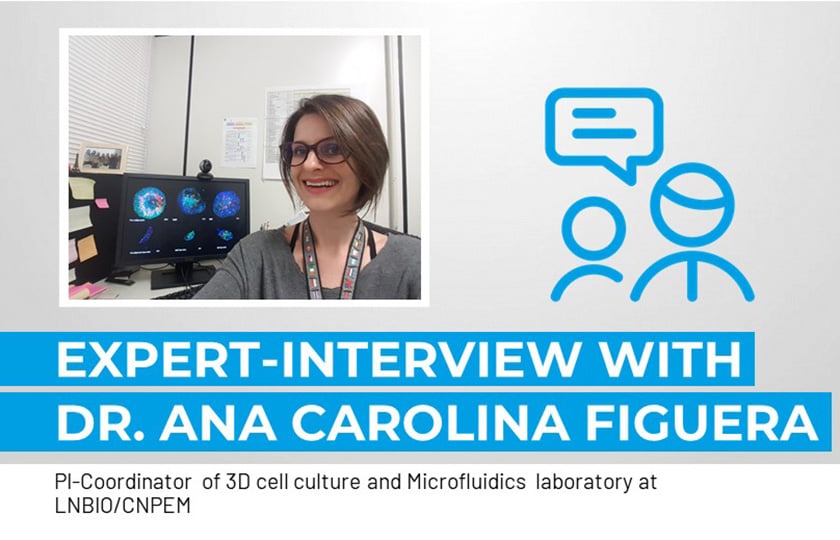Finding New Insights to Combat Obesity – With Validated 3D Cell Cultures
Obesity is a massive global challenge of pandemic proportions that has nearly tripled in the last 45 years. Scientists are working hard to find solutions for it, often using animal models or adipocyte monolayer cell cultures for their studies.
With the development of three-dimensional (3D) cell cultures, it is now possible to reconstruct the physiology of living organisms much more accurately, which holds great potential for reducing animal testing. The validation of 3D cell culture experiments can be performed using mass spectrometry-based proteomics.
In this article, we summarize the key findings of an exciting 2021 paper [1] by Avelino and colleagues to give you an overview of the spheroid and organoid validation approach.
The morphology of 3D cell culture and adipose tissue is largely comparable, so the validation is more about ensuring comparability of in vivo properties, i.e., to see how other physiological features of this tissue are recapitulated.
3D culture and omics for more realistic data
Advances in "omics" technologies allow us to characterize cell cultures at the level of the proteome, metabolome, transcription factors, DNA binding, and transcriptome. Current research is therefore focused on the development of an obesity study pipeline, including proteomic analysis to validate adipocyte-derived spheroids [1].
Through the combination of collected mass spectrometry data from differentiated spheroids and from murine white adipose tissue (WAT), over 1700 proteins were identified in both samples. By using a comprehensive proteomic analysis, the researchers observed that the in vitro 3D culture of differentiated adipocytes shares important molecular pathways with the WAT, including expression of proteins involved in central metabolic processes of the adipose tissue.
Spheroids can therefore be valuable models to study obesity and adipogenesis and provide new insights into the biological mechanisms of these diseases.
Spheroids recapitulate important in vivo properties of adipose tissue
Spheroids and WAT have 536 proteins in common, which is 83% of the total proteins identified in WAT spheroids, indicating a high similarity rate between the 3D model and the tissue extracted from the animal.
Functional enrichment analysis for the combined up-and-down regulated proteins analyzed biological processes and revealed important pathways shared between spheroids and WAT. One example is the "response to the oxidative stress", which is associated with preadipocyte proliferation increase, adipocyte differentiation, and the size of mature adipocytes. In obesity, this biological process is related to several health disfunctions, showing great resemblance of the 3D model with the murine WAT itself.
Functional enrichment data was an important tool in determining which biological processes were present in both the animal and 3D cell culture models. The researchers were able to show that 3D models can be used in a meaningful way, focusing on proteins that are present in key biological pathways.
Enabling the manipulation of adipospheres with Magnetic 3D Cell Culture (M3D)
Following the enabling tool path, magnetic 3D cell culture (M3D) facilitates the manipulation of adipospheres, which have the unique characteristic of changing density as pre-adipocytes start differentiating into adipocytes due to lipid accumulation. Therefore, adipocyte spheroids float, and manipulating these cultures is challenging, such as when changing media, performing immunohistochemistry, and simply collecting the spheroids for mass spectrometry downstream measurements. Here, the magnetized adiposphere allows the magnetic field to hold them in place for easy handling [1-4].
3D cell culture – unlocking new insights from the depths of disease mechanisms
The presented study proposed a model to validate 3D cultures, comparing them to a model organism. Results show that 3D cultures provide a framework for future investigations to decipher underlying mechanisms and test therapeutic targets to manage or treat adipose tissue-associated diseases such as obesity.
Request publication
Interview with Dr. Ana Carolina Migliorini Figueira
In this highly interesting interview one of the article authors, Dr. Ana Carolina Migliorini Figueira, PI-Coordinator of 3D cell culture and Microfluidics laboratory at LNBIO/CNPEM, talks with Dr. Glauco R. Souza, Director of Global Business Development & Innovation at Greiner Bio-One, about her fascinating work. She explains why she started to use 3D cell culture, the benefits it brings to her research, the surprising results, and how the scientific community is shifting away from skepticism toward widespread acceptance of 3D cell culture models over animal testing.
Ready to enter the next level?
Please fill out this form and contact our experts today to find the perfect solution for you!
Don't miss our regular updates on scientific topics around 3D Cell Culture
References
[1] Avelino TM, García-Arévalo M, Torres FR, Goncalves Dias MM, Domingues RR, de Carvalho M, Fonseca MC, Rodrigues VKT, Leme AFP, Figueira ACM. Mass spectrometry-based proteomics of 3D cell culture: A useful tool to validate culture of spheroids and organoids. SLAS Discov. 2022 Apr;27(3):167-174. http://doi.org/10.1016/j.slasd.2021.10.013. Epub 2021 Oct 27. PMID: 35058185.
[2] Daquinag AC, Souza GR, Kolonin MG. Adipose tissue engineering in three-dimensional levitation tissue culture system based on magnetic nanoparticles. Tissue Eng Part C Methods. 2013 May;19(5):336-44. doi: 10.1089/ten.TEC.2012.0198. Epub 2012 Nov 2. PMID: 23017116; PMCID: PMC3603558.
[3] Batista ML Jr, Meshulam T, Desevin K, Rabhi N, Farmer SR. Three-Dimensional Adipocyte Culture as a Model to Study Cachexia-Induced White Adipose Tissue Remodeling. J Vis Exp. 2021 Jan 18;(167). doi: 10.3791/61853. PMID: 33522508.
[4] Tseng H, Daquinag AC, Souza GR, Kolonin MG. Three-Dimensional Magnetic Levitation Culture System Simulating White Adipose Tissue. Methods Mol Biol. 2018;1773:147-154. doi: 10.1007/978-1-4939-7799-4_12. PMID: 29687387.
